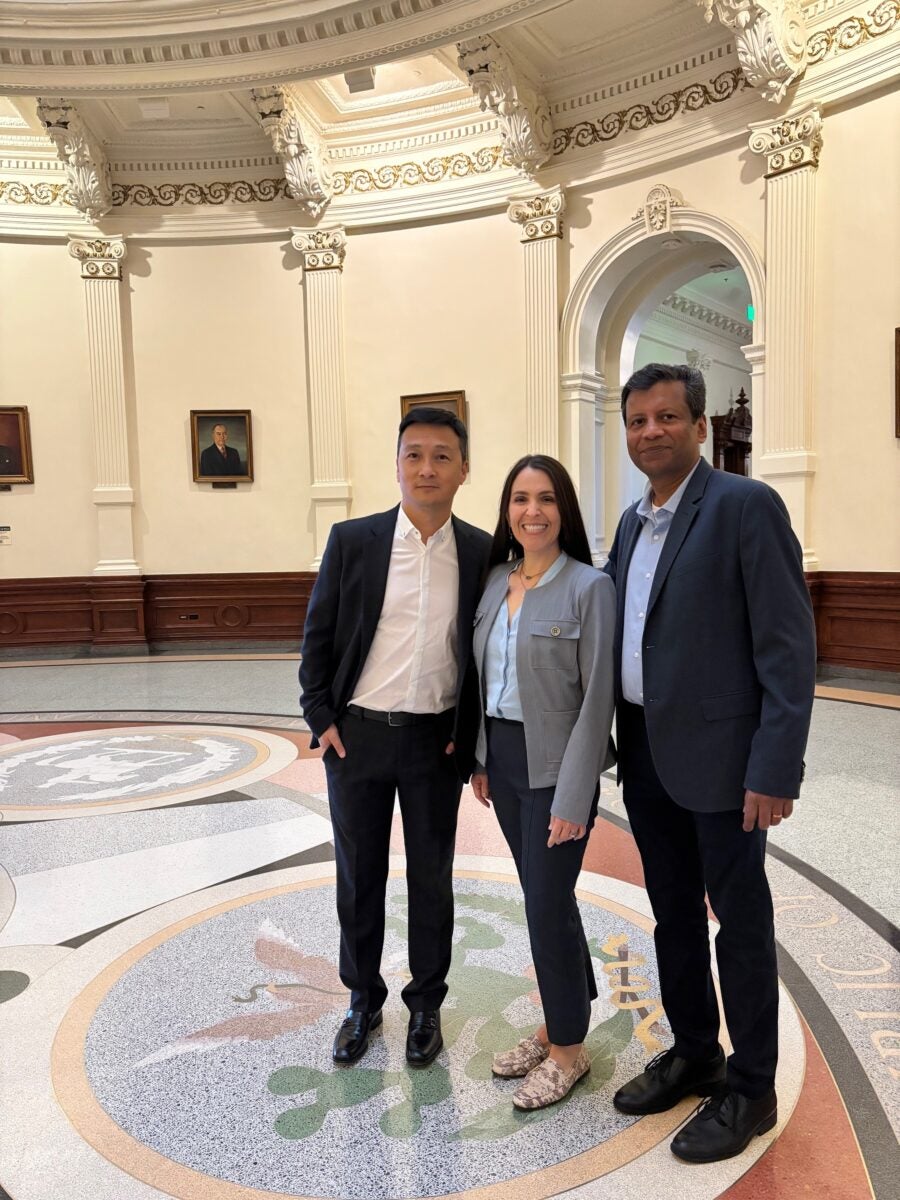AI Can Improve Care and Save State Health Dollars, McCombs Professor Tells Legislature
Professor Indranil Bardhan addresses Texas IT Caucus with research-backed ideas

With recent cuts to federal public health funding, Texas is seeking ideas for how to save at least $550 million on health and human services. In a Sept. 10 presentation to a Texas legislative caucus, Indranil Bardhan of The University of Texas at Austin’s McCombs School of Business proposed one novel approach: incorporating artificial intelligence into state health care programs, from telehealth to intensive care units (ICUs).
“I’ve looked at a variety of different problems where we actually use AI to improve the effectiveness and the value of health care delivery,” he said, drawing on his own research. Bardhan is a professor of management information systems and the Charles and Elizabeth Prothro Regents Chair in Health Care Management at McCombs. He also has a courtesy appointment as professor of medical education at the Dell Medical School.
His listeners included members of the Innovation and Technology Caucus, a bipartisan group founded in 2015, with 65 members from both the House and Senate. Also presenting was Shawn Wang, chief AI officer of Gainwell Technologies, which provides digital processing for state health care programs such as Medicaid and partners with research universities, including McCombs.
Bardhan explored ways AI could help to modernize state government, with a focus on the Department of Health and Human Services. He described several research projects in which AI had increased health care efficiency while reducing costs:
- Predicting patients’ lengths of stay in ICUs, enabling hospitals to serve more patients by better scheduling bed availability.
- Identifying congestive heart failure patients at high risk of readmission within 30 days of release.
- Combining heart patient data from wearable devices, such as Fitbits, with clinical data in their electronic health records, allowing doctors to better forecast patient health outcomes and reduce hospitalizations.
“Things like your exercise patterns, walking patterns, and even your sleep patterns can provide good predictive capabilities for your utilization of inpatient and outpatient visits in the future,” Bardhan said.
In telehealth, he proposed letting AI chatbots do initial consultations and assessments with patients. The AI agents could save money while freeing physicians for more complex duties.
“You can bend the cost curve down,” he said. “An AI agent that has the appropriate knowledge, trained through millions and millions of records of consultations, can do the same work that a human being can do.”
Wang complemented Bardhan’s research focus by describing ways to implement AI in practice. In one example, he described how an AI assistant could index and summarize scanned documents and make recommendations to human case workers, boosting their efficiency at least 30%.
Such processes could help manage medical cases, he said, but also be used to audit payments, monitor enrollment, and pre-authorize clinical procedures.
He also stressed the need for safeguards to ensure responsible AI and for metrics to measure its actual operational and cost savings.
Listeners were interested in hearing more. “In Texas, our IT infrastructure is 50 years behind,” said Rep. Pat Curry of Waco. “It’s exciting to see that there are companies that are bringing the implementation piece to the table.”
Bardhan hopes the presentation will begin a continuing relationship with the caucus, helping legislators better understand both the possibilities for AI and identify areas to target for future study.
“We can provide them with insights based on research to use data to improve patient care,” he said. “This can also include research on new ways to transform delivery of rural health care in Texas using AI-enabled technologies.”
Story by Steve Brooks
About this Post
Share:


